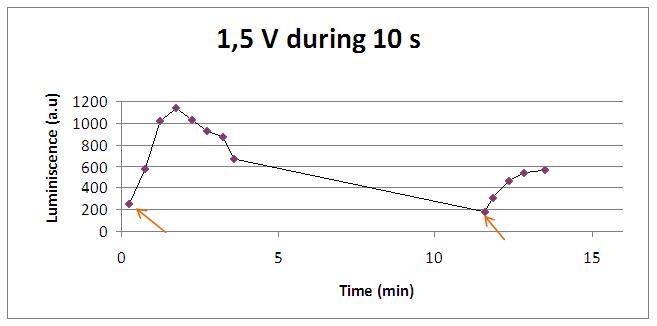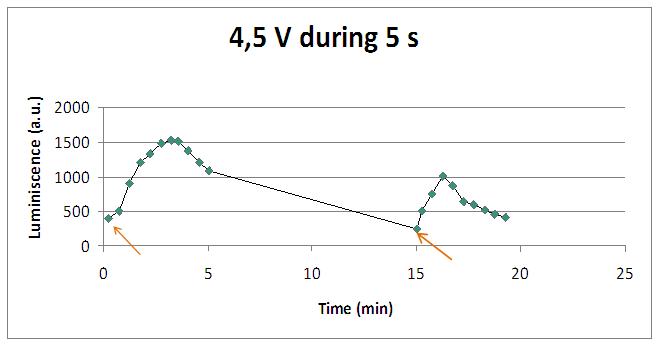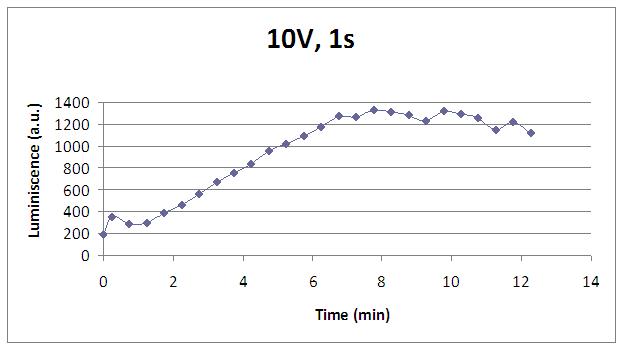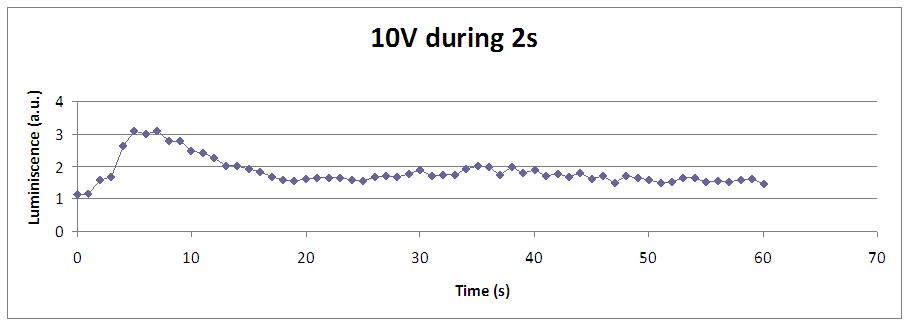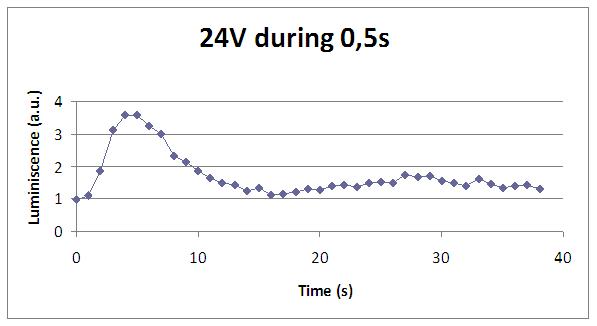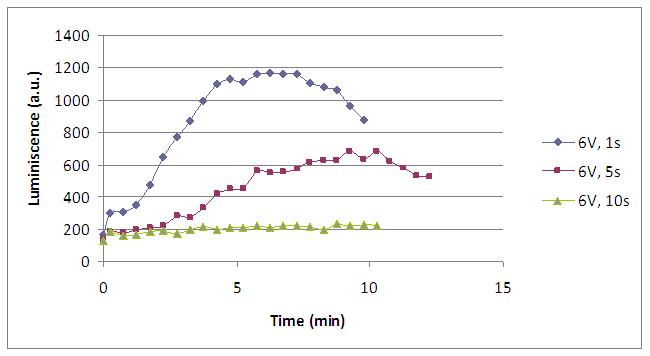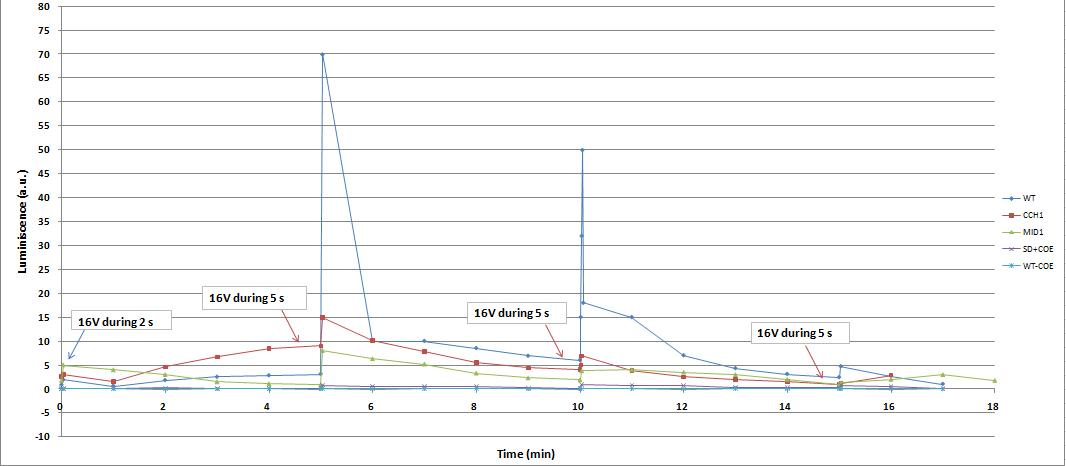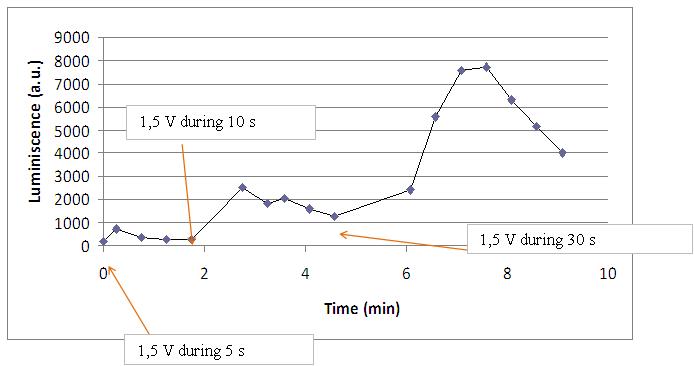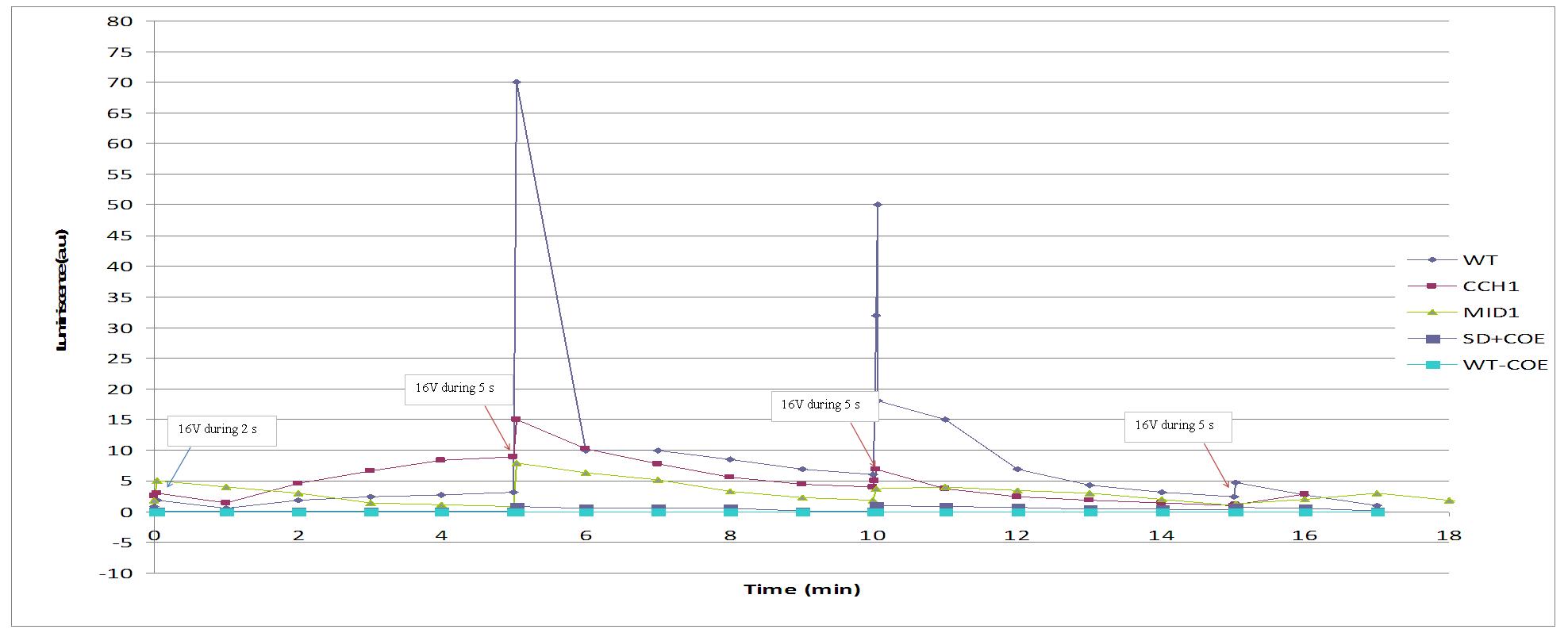Team:Valencia/WetLab/YeastTeam/Results/graphs
From 2009.igem.org
Electrical input
When the experiments with an alkali input showed us that yeasts were able to produce light because of their transformation, we tried our ambitious goal: stimulate calcium channels with an electrical input.
We use two luminometers, one luminometer discontinuous and the other is continuous. Each luminometer uses different units, depends on the manufacturer. For this reasons we can't compare directly the results obtained with one luminometer with the results of the other. According this, when we only compare results in the same graph if they were obtained with the same luminometer. However, an increase (or not) in the luminosity, means the same at two luminometers and the experiments are complementary and reaffirms our conclusions.
We reproduced the mentionated Viladevall et al's protocol, incubating the transformed yeasts with coelenterazine, but changing the KOH by electricity. Surprisingly, we found that light was also produced in a very similar way. We tried with different times and voltages in order to find the optim conditions for a big peak of light. Some of our graphics are theese:
We realised that the time of exposure to the electrical stimulus was crucial, even more that the aplied voltage. That means, if we increased the voltage at very short times, cells could produce a more abrupt peak of light. But if we increased the time of exposure to the electricity, we observe a less defined response, with more flattened peaks.
That’s probably because a big exposure time of electrical input damages and killes the yeasts, making them to release their components to the medium, including the aequorin-coelenterazine-Ca2+ complex, so the emission of light is more uniform in time, instead of the production of the flash produced by the Calcium enetering in the cell.
In the case of very little voltages (like 1,5V) this observation is not carried out by our yeasts. The reason must be that the electrical input is too low, so yeasts don’t die so easily as with more elevated voltage, and a better response is produce with a more prolongated electrical shock.
This graph clearly show us that using a same voltage, we obtain a better response with the shortest time of the electrical input.
Our controls discard the idea of an artifact. For example, light could be made by a spark produced during the discharge. It was not very probable, because the peak observed was produce near 400 seconds after the stimulus. But, another time, when cells without coelenterazine or mutants are used, we see no light.
Studying the repetibility of the process, this is a little different from the chemical stimulus, but the system has a similar behaviour, and we can stimulate several times the same sample getting a response. However, every next shock produces a fewer peak of light. We hace two hypothesis: one of them is that a part of our yeasts die meanwhile the electrical stimulus. The other one is that coelenterazine is not reusable, so a proportion of it runs down in every emission of light.
 "
"

